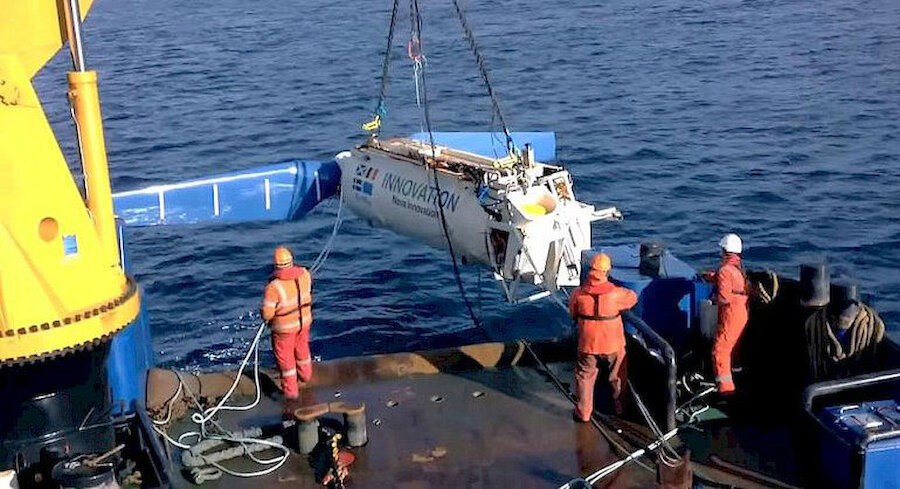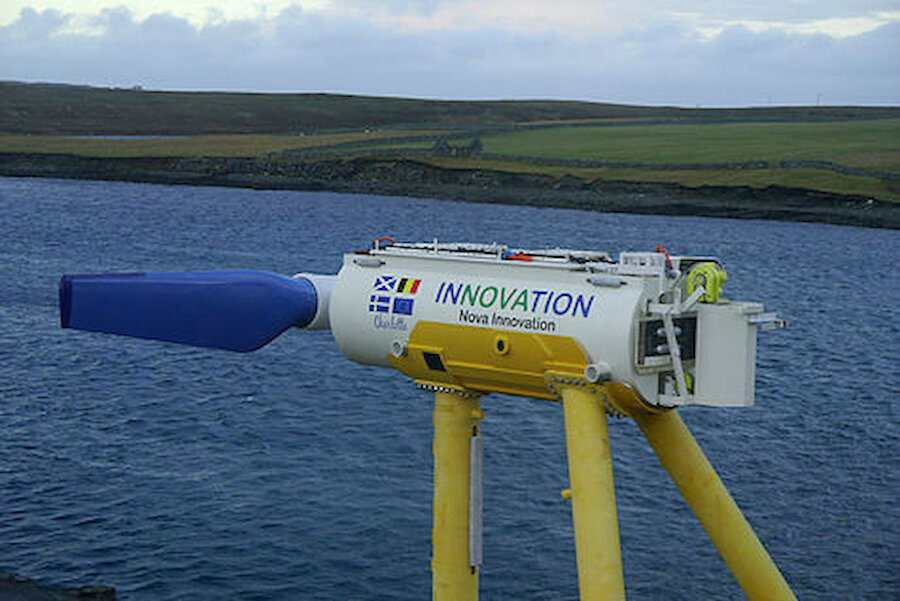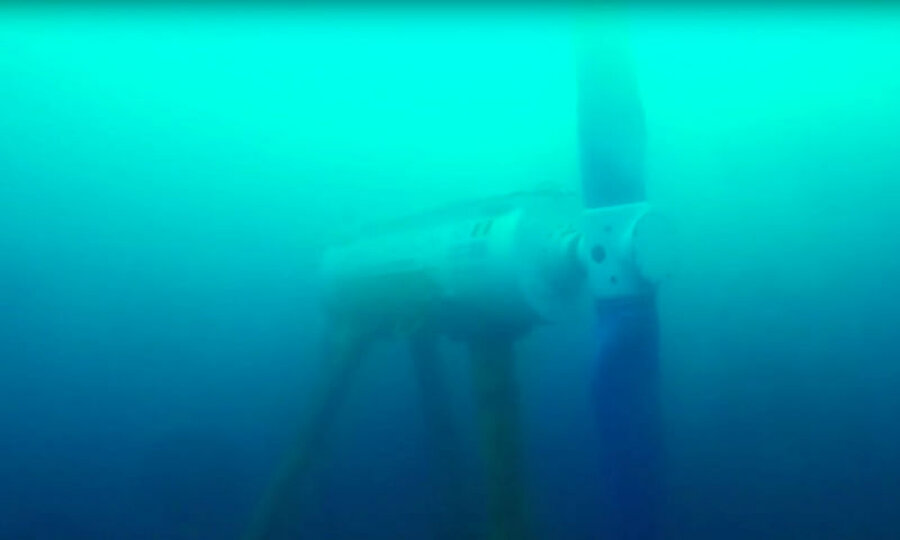Shetland is rich in renewable resources, particularly in terms of potential wind and tidal power, and there’s been another very positive development at the tidal installation in Bluemull Sound, the channel which separates the northern islands of Yell and Unst.
A year ago, we reported on Nova Innovation’s successful deployment of a third tidal turbine at that site The first Nova M100 turbine had been installed in March 2016, with a second added that August. The Bluemull Sound offshore tidal array was the first in the world to supply electricity to the grid.
The latest development at the site represents another world first, because it demonstrates how to overcome one of the well-known challenges in realising the potential of most forms of renewable energy, namely its variability. Tidal power isn’t available during the period when the tide is on the turn. We usually have plenty of wind, but wind speeds rise and fall and, even in Shetland, there are days when there’s little or no air movement. Wave power is broadly related to wind speed.






